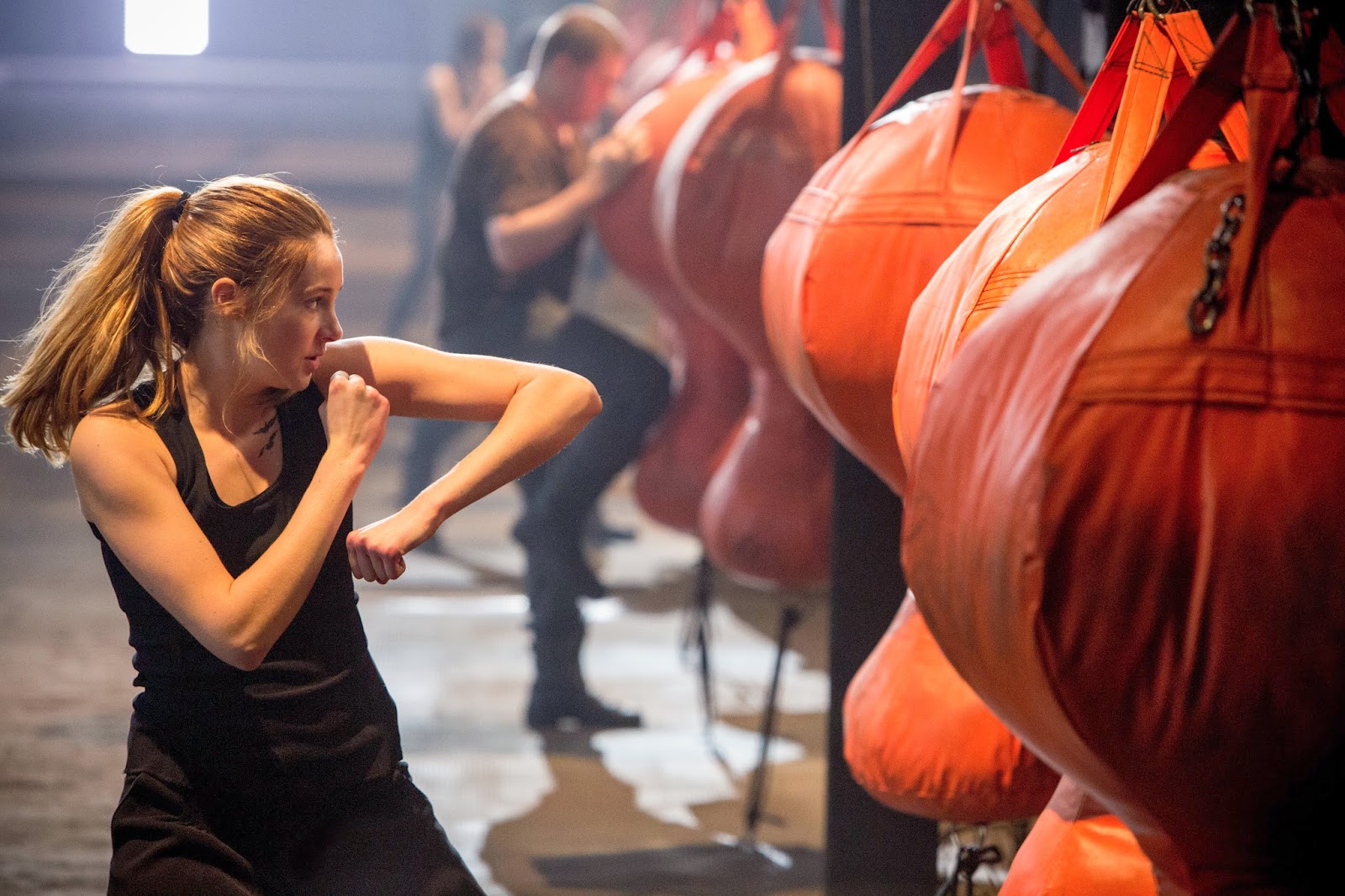In the race to get young adult books turned into movies I feel like roadkill as the studios speed to get their hot properties, with plots involving warring schools/houses/factions/districts/classes, onto the screen to woo in Hollywood’s most fickle audience — teenagers.
This week alone, we’ve already seen the release of trailers for two more, The Maze Runner and The Giver. Between them, The Hunger Games and now Divergent, you would be forgiven for not telling them apart with all their angsty teens, dystopian settings and perilous class warfare.
Divergent, like Hunger Games before it, benefits for looking absolutely stunning. It takes place in a fully realized and crafted science-fiction world, with scarred skyscrapers serving as wind turbines and drained harbors as farming land. Around the city is a fence, it’s electrical countermeasures humming ominously in the soundtrack, that would break the morale of Kong. Early in the film, we’re shown cables criss-crossing the city and later we get a payoff: the cables serve as an exhilarating and impractical transportation system. The production designers must have had fun creating this world; I had fun taking it all in. (On a side note, notice how the most futuristic prop in every sci-fi movie is a syringe.)
And that’s where my praise largely ends. This is a broken movie. It’s plot simply can’t sustain itself. It takes place in a time after mankind has apparently destroyed itself because “people had choices.” I would roll my eyes and say “whatever” to that reasoning, but this plot point is so important that it’s the basis of the entire film and others beyond it. And it ruins the movie.
Divergent begins with Tris (Shaileen Woodley), a sweet-natured girl who questions her less-than-sweet thoughts. She lives with her parents in nearly complete segregation in a destroyed version of Chicago, which is divided into five social classes or castes: Abnegation, the selfless and charitable; Amity, peaceful farmers; Candor, the brutally honest types (and comedians?); Dauntless, the warriors; and Erudite, the intelligent bureaucrats. At a certain age, teens are required to attend the reaping … wait, wrong movie … they’re made to take LSD-fueled tests and then pick the faction that they want to serve for the rest of their lives.
After a lengthy choosing process that involves a disease-ridden knife, Tris picks Dauntless, a class so laughably dopey they are nearly cartoons. For starters, Dauntless faction members run everywhere, and they climb on everything like spider monkeys. And when they arrive at train stations, they wait for the train to leave so they can board it by jumping into the open doors. I’m pretty sure Dauntless’ creators were born from a Mountain Dew overdose sometime during a mid-’90s X-Games broadcast. Remember Poochy, from The Simpsons? I’m pretty sure he was Dauntless, as was the cast of Point Break, all those Mentos commercials and the Neverland boys in Hook (“Bangarang, Ruffio!).
And this is where the movie gets screwy. See, the factions maintain order. How or why is never really explored; you’re just expected to buy it, ludicrous price tag or not. Some exposition is offered by Erudite mastermind Jeanine (Kate Winslet), but it just made my head spin faster and in the other direction. Most troublesome is how the movie seems to encourage people — teens especially — to choose a team and stick with it. In high school, these factions would be called jocks (Dauntless), nerds (Abagnation), cheerleaders (Candor), student council (Erudite), and cowboys (Amity). Fans of the books will argue that the classes don’t really matter, because the point is that the classes need to be thrown out, which is what Tris eventually tries to do. But why then do fans show up happily proclaiming their faction of choice, and why does the Divergent website proudly let you pick your faction? It as if the movie subscribed to this kind of unusual segregating.
It’s clear the factions are part of a flawed social system, but no one in the movie sees that, even as one faction is chemically programmed to exterminate another faction. The rationale for the genocide: fear … of free agency, of peace, of an open government. None of it makes sense. Consider how this was handled in a better movie: Equilibrium, in which mankind is required to take an emotion-suppressing drug because emotion is what causes war and violence. That's a tidy package, wrapped as neatly as it can be considering how ludicrousness of the premise. Another example, Ray Bradbury's Fahrenheit 451, the model for many of these films. At least Hunger Games made sense: there was a war, a tyrannical ruler and a punishment for choosing the wrong side in the war. You could connect the dots and get an idea of what kind of story was being told. Divegent’s dots lead to a scrambled mess.
When Divergent isn’t tripping over itself, it spends much of the movie with Tris as she is pummeled through Dauntless’ training program, which involves laser tag, train hopping, freefalling through condemned buildings and public beatings, lots of public beatings. She has one nice instructor (Theo James) and one awful one (Jai Courtney), both of whom seem to make kissy faces in the mirror when they look at their tattoos. Woodley, who does wonders with her sub-standard material, deserves a better young adult movie franchise. This one is beneath her talents. Divergent does reunite Woodley with Miles Teller, who shared some lovely and heartbreaking scenes in last year’s much more rewarding film The Spectacular Now.

















































